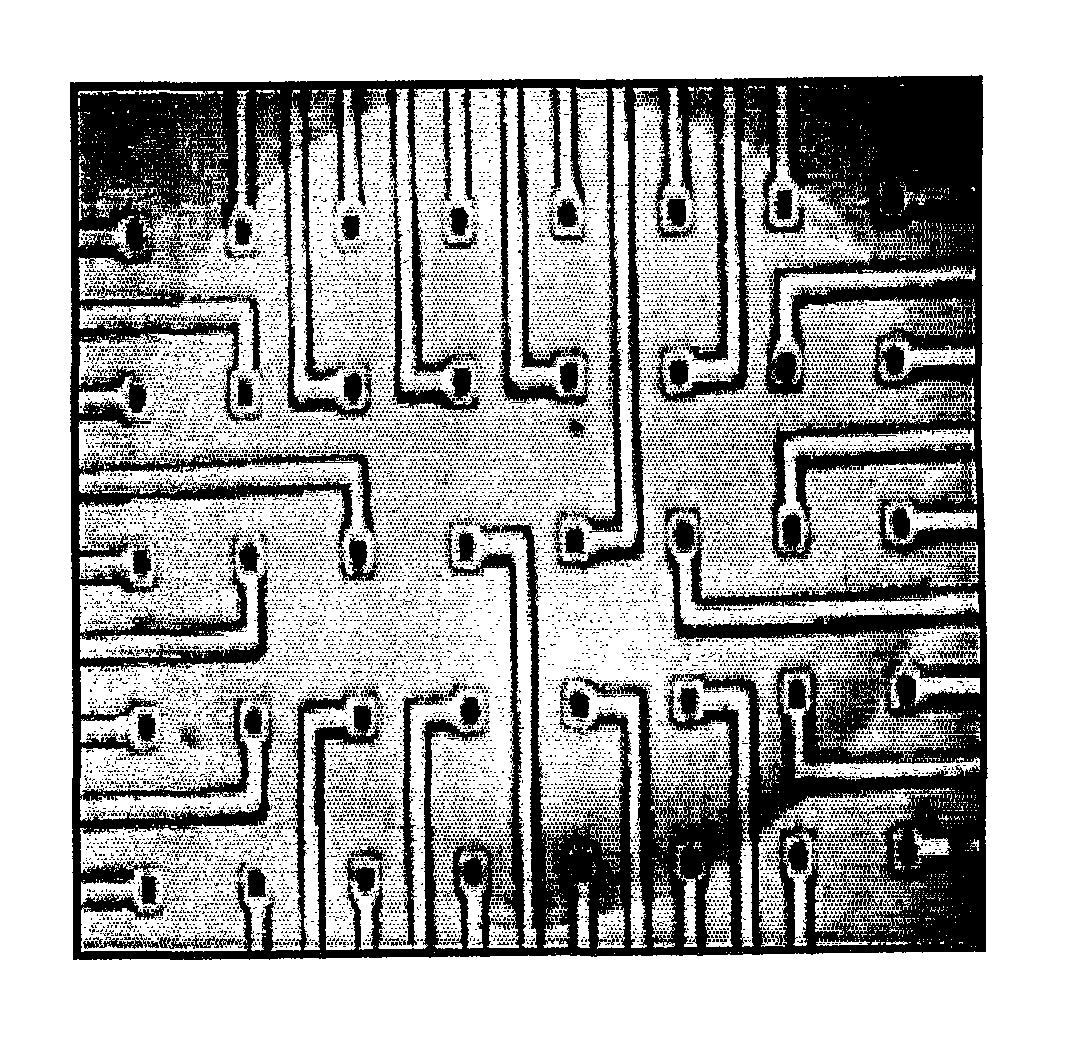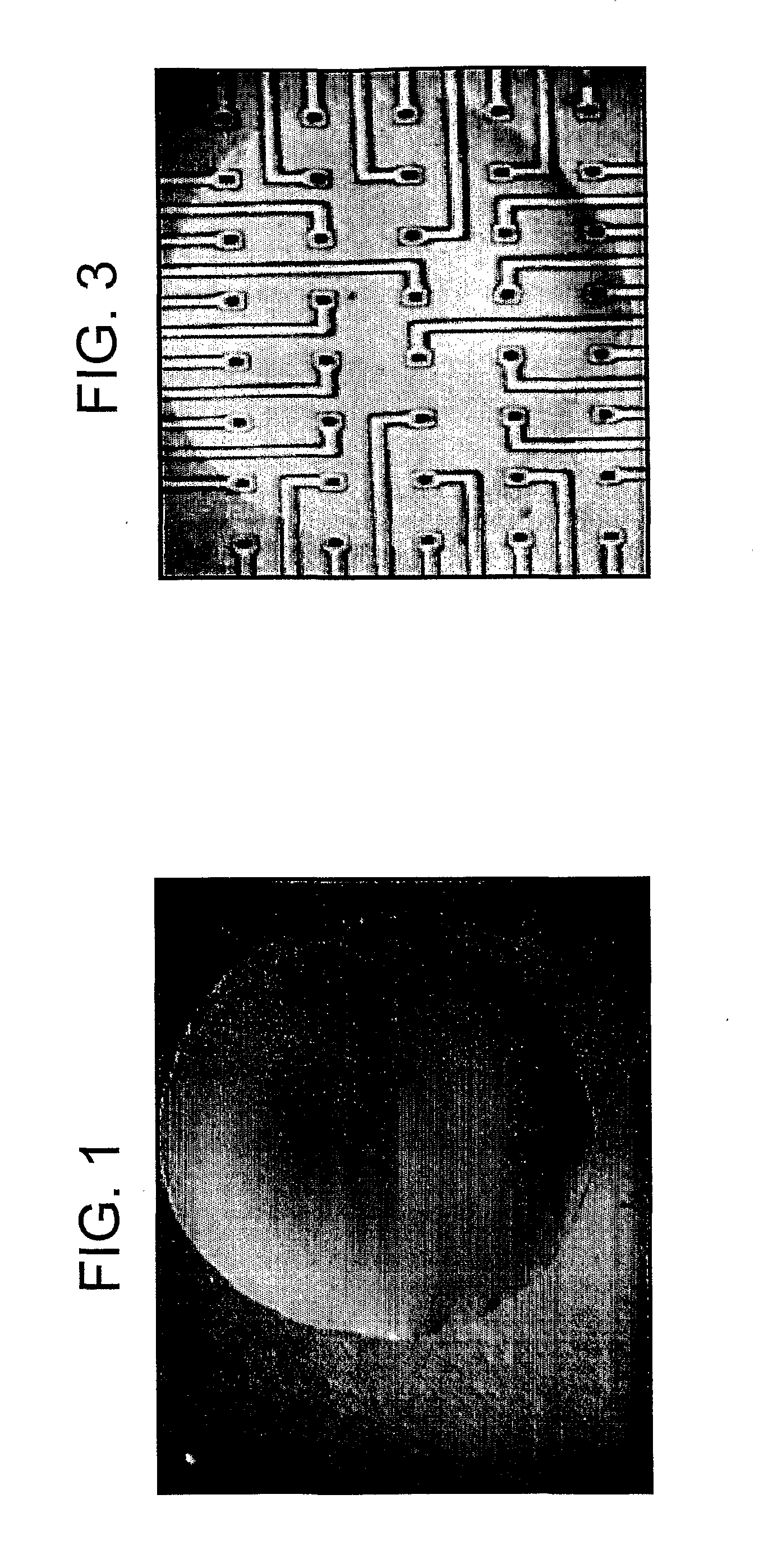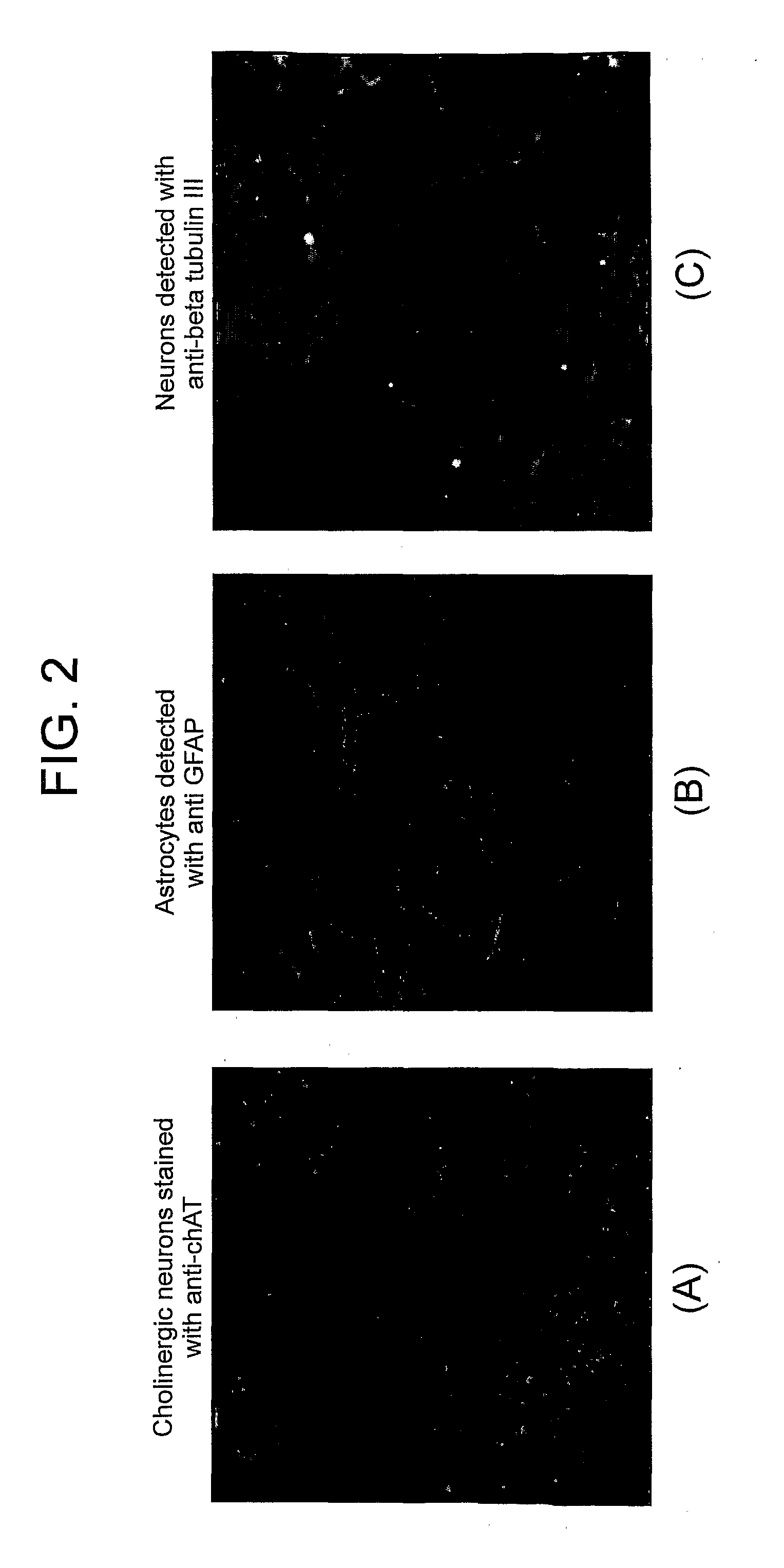Method of Producing Organotypic Cell Cultures
a cell culture and organotypic technology, applied in the field of methods, can solve the problems of losing many of the characteristics of cultured cells, only having a limited lifespan, and losing many of their specific characteristics
- Summary
- Abstract
- Description
- Claims
- Application Information
AI Technical Summary
Benefits of technology
Problems solved by technology
Method used
Image
Examples
example 1
Organotypic Culture of Dissociated Cells from Mouse Embryos Cortex (E-18)
[0177]Embryonic brains were removed from mouse embryos, and the two hemispheres were separated. After removal of the cerebellum as well as the thalamus and basal ganglia, the pia mater was carefully removed and cortical regions from 5 brains were digested with 0.1% trypsin in Hepes buffered salt solution (HBSS). Clumps of cells were allowed to settle under gravity, and overlying dissociated cells in suspension were gently aspirated with a pipette and placed in a fresh centrifuge tube.
[0178]Dissociated cells were compacted by spinning at 1000×g for 10 minutes, and 2-5 μl of the resulting cell pellet was removed directly with a sterile pipette tip and placed on the centre of the Biopore hydrophilic PTFE membrane of a Millipore-CM culture device.
[0179]Cortical culture medium (10% Ham's F12 (Sigma), 8% FBS, 2% Horse serum, 10 mM Hepes (Gibco), 2 mM L-Glutamine (Gibco), 50 Units Pen / strep made up to 1× media in DMEM...
example 2
Organotypic Culture of Dissociated Cells from Rat Heart
[0187]Dissociated neonatal rat ventricular myocytes were isolated as described by Ren et al (1998). Briefly, the animals were euthanized, and their hearts were rapidly removed and perfused with oxygenated Krebs-Henseleit bicarbonate (KHB) buffer. Hearts were subsequently perfused with a nominally Ca2+-free KHB buffer for 2 to 3 minutes until spontaneous contractions ceased, followed by a 20-minute perfusion with Ca2+-free KHB containing 0.5% w / v type II collagenase (Invitrogen catalogue number 17101) and 0.1 mg / mL hyaluronidase (Sigma-Aldrich catalogue number H 4272). After perfusion, the left ventricle was removed, minced, and incubated with fresh enzyme solution (Ca2+-free KHB containing 0.5% w / v type II collagenase) for 3 to 5 minutes. The cells were further digested with 0.2% trypsin before being filtered through a nylon mesh (300 μm). Clumps of cells were allowed to settle under gravity, and overlying dissociated cells in s...
example 3
Organotypic Culture of Dissociated Cells from Human Heart
[0190]Dissociated human foetal cardiomyocytes were isolated as described by Mummery C. et al (2002), from tissue provided under license by the University of Southampton. Briefly, foetal atrium or ventricle was macerated and digested with 0.2% trypsin before being filtered through a nylon mesh (300 μm). Clumps of cells were allowed to settle under gravity, and overlying dissociated cells in suspension were gently aspirated with a pipette and placed in a fresh centrifuge tube. Dissociated cells were compacted by spinning at 1000×g for 5 minutes, and 5-10 μl of the resulting cell pellet was removed directly with a sterile pipette tip and placed on the centre of the Biopore hydrophilic PTFE membrane of a Millipore-CM culture device. Neurobasal medium (Invitrogen catalogue number 21103-049) supplemented with Gibco (Invitrogen catalogue number 17504-044) was added to the underside of the membrane. The culture was compacted further t...
PUM
| Property | Measurement | Unit |
|---|---|---|
| radius | aaaaa | aaaaa |
| compactive force | aaaaa | aaaaa |
| force | aaaaa | aaaaa |
Abstract
Description
Claims
Application Information
 Login to View More
Login to View More - R&D
- Intellectual Property
- Life Sciences
- Materials
- Tech Scout
- Unparalleled Data Quality
- Higher Quality Content
- 60% Fewer Hallucinations
Browse by: Latest US Patents, China's latest patents, Technical Efficacy Thesaurus, Application Domain, Technology Topic, Popular Technical Reports.
© 2025 PatSnap. All rights reserved.Legal|Privacy policy|Modern Slavery Act Transparency Statement|Sitemap|About US| Contact US: help@patsnap.com



